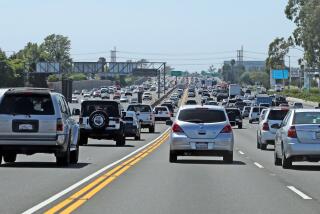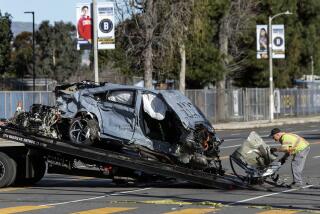55-Speed Limit Does Save LIves
- Share via
Raymond Price’s column on the 55 speed limit (Editorial Pages, Oct. 6) contained some misinformation I’d like to correct. First, 55 does save lives. That’s indisputable--not guesswork.
Studies with careful statistical controls for the effects of factors other than the speed limit prove that about half of the dramatic reduction in highway fatalities during the mid-1970’s was directly attributable to the 55-limit. (The remainder was due to other factors, including the economy.) This saving of lives continues today.
It’s true that many motorists go faster than 55, but that’s not because of the law. Earlier speed limits of 65 and 70 m.p.h. were routinely exceeded, too, so raising the speed limit won’t produce a nation of law-abiders. In England, there was a movement last year to raise the speed limit on motorways from 70 to 80 m.p.h., because almost half of all motorists were exceeding the limit; 15% were going 79 m.p.h. or faster. That movement wasn’t successful, mostly because of an expectation that even an 80 m.p.h. limit would be disregarded, too. (It’s worth noting that the chief driving instructor for the British Royal Society for the Prevention of Accidents recently spent a month in North America and concluded that “speed limits are generally much better observed than in the U.K.”)
A highway design speed of 70 m.p.h. doesn’t mean, as Price assumed, that it’s safe to travel at 70. The highway engineers who design the roads define “design speed” as the maximum safe speed that can be maintained under the most favorable conditions. It’s the speed that shouldn’t ever be exceeded on that road. If the speed limit were the same as the design speed, the latter would be exceeded routinely. Fifty-five keeps most motorists--even speedsters-- from exceeding the design speed of most roads, even interstate highways.
So let’s keep 55 because it makes sense. According to the National Research Council, raising the speed limit on rural interstates would cost 500 lives a year. Translate that to the airline industry-- if authorities found a way to save air travel time but the price was two extra airline disasters a year, would we do it? Would Price write in favor of it? Of course not, and highway deaths aren’t any less tragic than lives lost in airline disasters.
BRIAN O’NEILL President Insurance Institute for Highway Safety Washington






